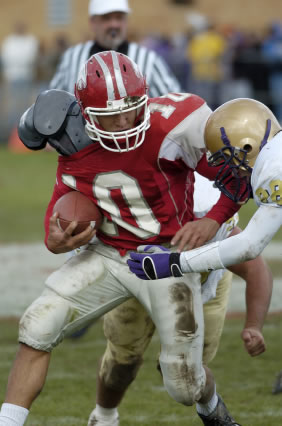
Image: iStockphoto
“Tests currently given to players who suffer concussions on the football field show that the measurable effects disappear 10 to 12 days after they receive a blow to the head,” explains Louis De Beaumont, who is currently writing a doctoral thesis on the topic. “However, our research has shown that sequelae can be observed up to nine months later. We’re afraid that blows to the brain could even have lasting effects.” Â
Working under the supervision of neuropsychologist Maryse Lassonde, the researcher based his work on the meticulous observation of 52 university-level football players who had suffered at least one concussion in the summer of 2004. For several months after the incidents, the players were followed with neurocognitive and MRI tests. Although all the subjects appeared to be asymptomatic (as indicated by the most commonly used battery of tests), their brains showed anomalies several months after the blow. In addition to having ECGs that showed significant changes after the incident, those who had suffered concussions had some problems with motor movements. “We would have to take another look at the follow-up tests the athletes were given to decide when they could go back to the field, because the tests are not sensitive enough to recognize the severity of concussions,” says De Beaumont.
Himself a former elite athlete – he played hockey up to the junior level in Ontario – Louis De Beaumont has taken an interest in concussions since he suffered one himself at the age of 16. He is amazed that sports medicine still relies on “pencil and paper” tests to evaluate the severity of blows to the head. “Much more highly evolved technologies exist, so I don’t understand why we don’t use them more,” he observes.
With the assistance of his supervisor and Professor Hugo Théoret, an expert in the application of transcranial magnetic stimulation, De Beaumont was the first to use this technique to evaluate motor function in victims of concussion. Two electrodes placed between the thumb and index finger can be used to calculate the intensity of muscle contraction and the time lapse between stimulus and movement. “We’ve observed major deficits in inter-neuronal communication system functioning in the brains of those who have had concussions,” he says.
In other words, people who have suffered concussions have a slower reaction to motor commands sent by the brain to their muscles. “In our view, the differences are minimal – an average of about 40 milliseconds between athletes who have had concussions and those who have never had one – but it’s a measurable difference that could be a good indicator for the importance of sequelae.”
Source: University of Montreal
